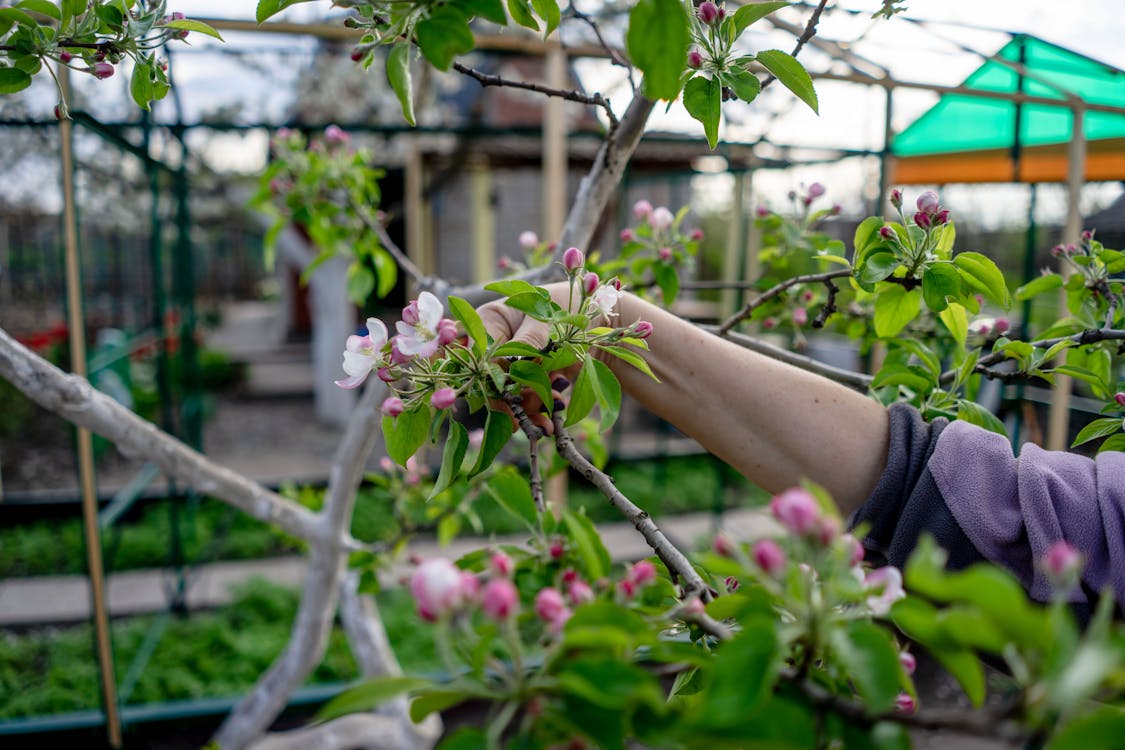Maintaining a healthy ecosystem and extending the life of these precious resources both depend on proper tree care. Trees enhance our environment in many ways, including cleaning the air we breathe, reducing our dependence on fossil fuels, and giving wildlife a place to call home.

This article will give you great ideas and practical tips on how to care for trees, whether you are a professional arborist, a homeowner with a few trees in your yard, or just someone who appreciates the advantages of trees.
We will go over the fundamentals of tree care, from planting and watering to trimming and insect protection, so that you can help your trees thrive. Come along on this adventure to find out how you can help trees in your area and become a better environmental steward.
How Do You Take Good Care Of Trees?
The health and lifespan of trees depend on proper care being given to them. If you have trees in your yard or are in charge of a bigger green space, consider the following advice.
Proper Planting
- Choose the right tree species for your area and soil type.
- Plant trees at the correct depth, making sure the root collar is level with the ground.
- Mulch around the base of the tree to retain moisture and control weeds.
Watering
- Provide adequate and consistent water, especially during dry spells.
- Water deeply at the root zone rather than shallow, frequent watering.
- Use a soaker hose or drip irrigation to conserve water and direct it to the roots.
Mulching
- Apply a layer of organic mulch around the base of the tree, but avoid piling mulch against the trunk.
- Mulch helps retain moisture, regulate soil temperature, and suppress weeds.
Pruning
- Prune trees regularly to remove dead or diseased branches.
- Properly prune to maintain a strong structure and prevent overcrowding.
- Avoid excessive pruning, which can stress the tree.
Fertilizing
- Conduct soil tests to determine nutrient deficiencies before fertilizing.
- Apply appropriate fertilizers in the recommended amounts and at the right time of year.
- Don’t over-fertilize, as this can harm the tree.
Protection from Pests and Diseases
- Monitor trees for signs of pests or diseases, such as discoloured leaves or unusual growths.
- Address issues promptly through proper treatments or professional help.
- Promote overall tree health to increase resistance to pests and diseases.
Support and Bracing
- Use supports or braces for young or weak trees to prevent breakage in strong winds or heavy snow.
- Remove supports once the tree becomes stable.
Preserve Roots
- Avoid compacting soil around the root zone by limiting foot and vehicle traffic.
- Do not cut or disturb roots unnecessarily.
Adequate Space
- Space trees properly to ensure they have room to grow to their full size without competing with other vegetation.
Regular Inspections
- Regularly inspect your trees for signs of stress, damage, or structural issues.
- Consider hiring an arborist for professional assessments.
Seasonal Care
- Adjust your care routine according to the seasons. Trees have different needs in spring, summer, fall, and winter.
Legal Considerations
- Be aware of local regulations and permits regarding tree care and removal.
Education
- Educate yourself about the specific needs and characteristics of the trees on your property.
Maintaining healthy trees calls for a long-term dedication to their upkeep. Trees in good health not only add aesthetic value to the area but also help keep the air clean and safe for everyone.
What Makes A Good Tree?
It is possible to identify a good tree by several distinguishing features that, taken together, increase its potential lifespan, durability, and worth. To wit, a “good” tree possesses these characteristics:
- Healthy Foliage: A good tree should have vibrant, green foliage that is free from discolouration, browning, or unusual spots. Healthy leaves are essential for photosynthesis and overall tree vitality.
- Strong Structure: A well-structured tree has a balanced canopy with sturdy branches that are evenly spaced. It should have a central leader (main trunk) and well-attached branches that do not pose a risk of falling.
- Appropriate Size: A good tree is appropriately sized for its location. It should not outgrow its space, causing problems with nearby structures or other plants.
- Healthy Roots: Healthy roots are crucial for a tree’s stability and nutrient absorption. A good tree has a well-developed root system that is free from damage, disease, or compacted soil.
- Resilience: Good trees can withstand environmental stressors, such as drought, strong winds, and temperature fluctuations. They recover well from minor damage or disturbances.
- Resistance to Pests and Diseases: Trees with natural resistance to common pests and diseases are desirable. However, even if a tree is susceptible, it can still be considered good if proper care and management practices are in place to address these issues.
- Annual Growth: A healthy tree exhibits annual growth through the addition of new branches, leaves, and trunk diameter. Slower growth rates may be acceptable for certain species, but a complete lack of growth can indicate underlying problems.
- Longevity: Good trees have the potential for a long lifespan, often measured in decades or even centuries for some species. They contribute to the ecosystem and provide benefits for generations to come.
- Environmental Benefits: Trees that provide environmental benefits, such as oxygen production, carbon dioxide absorption, and habitat for wildlife, are highly valued.
- Aesthetic Appeal: Trees that enhance the visual appeal of their surroundings with pleasing shapes, colours, and seasonal changes are often considered good choices for landscaping.
- Suitability for the Location: The right tree for a particular location should be well-suited to the soil, climate, and available space. Native or adapted species are often preferable because they are more likely to thrive.
- Low Maintenance: Good trees are relatively low-maintenance, requiring minimal care to stay healthy and attractive. They should not become a burden due to constant pruning, watering, or pest control.
- Legal and Ethical Considerations: A good tree complies with local regulations and ethical considerations regarding its planting and maintenance.
The idea of a “good tree” might shift based on the situation and the specific aims of the tree’s planting or care. It’s possible, for instance, that the qualities that make a tree suitable for planting in a forest are different from those that make it suitable for planting in a suburban yard.
Choosing the right tree for the right spot and giving it proper care is crucial for the tree’s long-term health and worth.
Conclusion
Caring for and appreciating healthy trees is not only the right thing to do but also has several positive effects on our environment and quality of life. The qualities of health, resilience, and compatibility with one’s environment are what make a good tree.
It improves the quality of our lives in countless ways, including the provision of shade and shelter, the maintenance of wildlife, and the purification of the air.
Best practices in tree care must be adhered to if trees are to fulfil their potential as assets to our communities and ecosystems.
This entails things like not just planting well but also watering carefully, trimming carefully, and keeping an eye out for pests and diseases. By following these guidelines, we can ensure that trees will continue to grow and thrive for years to come.
The search for healthy trees is an endeavour that benefits everyone and should be treated as such. As caretakers, we should ensure the survival of these unseen titans. This is an investment in a healthier, more sustainable, and environmentally friendly future for ourselves and future generations.
Therefore, let us continue to treasure and care for our trees, finding comfort in their shade and finding everlasting beauty in their presence.
Are you looking for tree removal services? Look no further than harry’s yard, visit us today!
